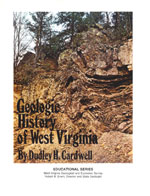Two of the dinosaurs are herbivores, and one a carnivore. All were found in 98 million year old Cretaceous rocks. The remains were found in an outback region of Queensland.
The meat-eater, named Australovenator, had three large slashing claws on each hand. Though compared to Velociraptor for it's size and likely mode of life, the predator was more closely related to the T-rex-like Giganotosaurus.
The plant-eaters were long necks called Titanosaurs. One of them, Wintonotitan, had a more upright neck, similar to brachiosaurus. The other, Diamantinasaurus, was more stocky and similar in appearance to Apatosaurus.
The meat-eater and one of the plant-eaters were found buried close together in what appears to have been an ox-bow lake. These types of lakes are associated with very slow-moving, meandering rivers in which an extremely arced bend of a river becomes cut-off from the rest of the flow, creating a curved lake. The other skeleton was found in what looks to have been the sandy bank of a gently-flowing river.
Many plant remains were found along with the dinosaur bones including impressions of woody stems and branches, cones, ferns and ginkos.
The researchers say they also brought back hundreds of other fossils they have not had time to extract from the rock. Many more fossils are still in the ground at the new dig sites.
Illustration Credit: T. Tischler, Australian Age of Dinosaurs Museum of Natural History
Source: PLos One








